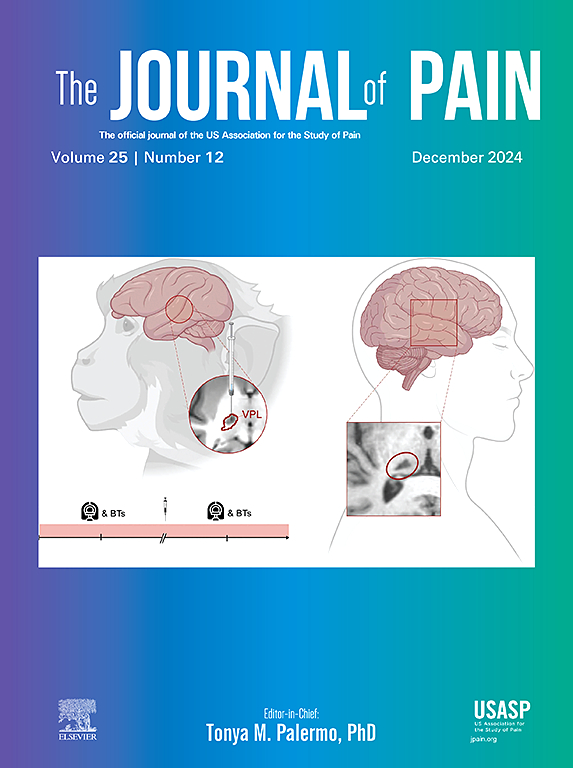Effects of acceptance and commitment therapy plus exercise for older adults with chronic low back pain: A preliminary cluster randomized controlled trial with qualitative interviews
IF 4
2区 医学
Q1 CLINICAL NEUROLOGY
引用次数: 0
Abstract
Chronic low back pain (CLBP) is increasingly prevalent in older adults and often leads to functional disability and depressive symptoms. This 2-arm, double-blinded, pilot cluster RCT, with semi-structured interviews, aimed to evaluate the acceptability, feasibility, and preliminary clinical efficacy of ACT plus exercise training (ACT+Ex) on improving pain-related outcomes, psychological outcomes, and physical fitness in older adults with CLBP at post-treatment and 6-month follow-up. Forty community-dwelling older adults (62–85 years) with CLBP, predominantly female, were randomized to ACT+Ex (n=20) or Education plus exercise program (Edu+Ex) (n=20) for 8 weekly group-based sessions, with assessments at baseline, post-treatment, and 6-month follow-up (primary endpoint). Self-reported outcomes included pain intensity, functional disability (Roland Morris Disability Questionnaires, RMDQ), health-related quality of life (EuroQol-5 Dimensions, EQ-5D-5L), psychological inflexibility (Acceptance and Action Questionnaire-Version 2, AAQ-II), and psychological well-being (Depression Anxiety Stress Scale). Physical fitness was assessed using the functional reach test (FRT), Timed Up and Go test (TUG), 6-minute walk test (6MWT), hand grip strength (HGS), and 30-second sit-to-stand (STS-30) test. This trial achieved high recruitment (23.5 participants per week) and completion rates (92.5%). Exploratory analyses revealed that ACT+Ex significantly improved pain intensity, disability, psychological inflexibility, HRQoL, and physical fitness at post-treatment and 6-month follow-up. Qualitative data identified 3 superordinate themes: previous healthcare experience affecting pain beliefs; acceptance strategies guiding behavioral changes; and facilitators and barriers to treatment compliance. These findings support the need for a definitive RCT and form a valuable basis for future exploration regarding the behavioral mechanisms of ACT in clinical applications.
Perspective
A multimodal therapy incorporating ACT and exercise promotes positive behavioral changes and its treatment effects are maintained at the 6-month follow-up especially for physical performance.
求助全文
约1分钟内获得全文
求助全文
来源期刊

Journal of Pain
医学-临床神经学
CiteScore
6.30
自引率
7.50%
发文量
441
审稿时长
42 days
期刊介绍:
The Journal of Pain publishes original articles related to all aspects of pain, including clinical and basic research, patient care, education, and health policy. Articles selected for publication in the Journal are most commonly reports of original clinical research or reports of original basic research. In addition, invited critical reviews, including meta analyses of drugs for pain management, invited commentaries on reviews, and exceptional case studies are published in the Journal. The mission of the Journal is to improve the care of patients in pain by providing a forum for clinical researchers, basic scientists, clinicians, and other health professionals to publish original research.
 求助内容:
求助内容: 应助结果提醒方式:
应助结果提醒方式:


